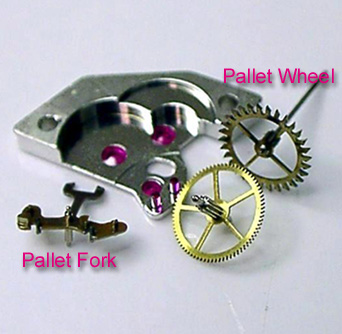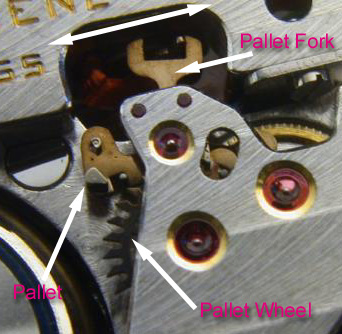|

Can
you help me sell my Oysterquartz?
No.
Post it on a watch forum sales corner or on e-bay.
I
have a ______ (fill in the blank with some obscure Rolex model). What can
you tell me about it?
Nothing.
(You'd be surprised at the number of non Oysterquartz questions I get.)
I
need ______ (fill in the blank with any part for an Oysterquartz). Can you
help me find it?
No.
All the info I have on Oysterquartz watches was done through hard
research and is posted on this site. I do not sell watches or
watch parts. I have no info about where Oysterquartz parts can be
obtained.
I
have a lady's Oysterquartz. What can you tell me about it?
It's
a fake. Rolex never made a lady's model of the Oysterquartz.
They do, however, make lady's quartz watches in the Cellini line.
Is
the Oysterquartz still made?
Unfortunately,
no. The SS/gold and all gold models last appeared in the 2003 Rolex
catalog. The all steel model 17000 last appeared in the 2001 catalog.
Actual production of all Oysterquartz models probably ceased sometime in
2001, which was the last year Rolex received any chronometer
certificates for quartz movements (according to COSC records.)
When was the Oysterquartz
introduced?
The Oysterquartz first
appeared at authorized Rolex retailers in the fall of 1977.
Is the Oysterquartz
antimagnetic?
Yes. Quartz
movements are typically very vulnerable to magnetic fields which tend to
depolarize the magnets used in the stepper motor. The typical
method used to avoid this problem is to enclose the movement within an
antimagnetic casing (usually made of soft iron). However, the 5035/5055
movement is antimagnetic by design up to 1000 Oersted and requires no
external shielding. The only other watch ever produced by Rolex that was
similarly antimagnetic without shielding was the extremely rare Milgauss
6543, of which only 88 pieces were ever made.
Why is the "tick"
of the Oysterquartz movement so loud?
The drive mechanism for
the 5035/5055 is very similar to the design of a traditional mechanical
watch escapement. The pulse motor drives a pallet fork which in
turn moves a pallet wheel. This wheel drives the second hand at a
1:1 ratio with one tick per second. The hour and minute hands are
driven off this pallet wheel. The loud "tick" you hear
every second are the pallets engaging the pallet wheel. That is
why the tick of the 5035/5055 has such a unique sound and is very much
like the tick of a mechanical watch, though at one tick per second
rather than the eight ticks per second of a 28,800 bph Rolex Perpetual
movement.


Was the Oysterquartz the
only Rolex watch to have this unique case design?
No. This angular
case design and integrated bracelet was introduced for the Ref 1530
Perpetual Date and the Ref 1630 Perpetual Datejust models. These watches
were made in very limited quantities and are extremely rare.
Was the Oysterquartz the
first Rolex to have a sapphire crystal?
No. The Rolex Quartz Date
Ref 5100, which was the forerunner to the Oysterquartz, came with a
sapphire crystal. The aforementioned 1530 Perpetual Date and 1630
Perpetual Datejust models also came with sapphire crystals. The
Oysterquartz was actually the third Rolex model to come with a sapphire
crystal.
How rare is the
Oysterquartz?
It has been estimated
that fewer than 25,000 Oysterquartz watches were made, which makes it
one of the rarest regular production watches Rolex has ever produced.
(To put the number 25,000 in perspective, remember that Rolex made
almost one million watches in 2004 and the Oysterquartz was in
production for nearly 25 years.)
Is the Oysterquartz a
collector's item?
There has been some
evidence that collectors are starting to take note of this watch, as
prices seem to be on the rise, especially for early models in pristine
condition. An Oysterquartz complete with the original boxes, manuals,
hangtags, and paperwork will command the highest prices. Also,
collectors seem to favor the very early model Datejusts from 77-79,
which have dials without "Superlative Chronometer Officially
Certified" on them. (All Day-Date models were certified
chronometers.)
How much can I expect to
pay for an Oysterquartz?
As with any Rolex, the
answer depends on the age and condition of the watch. I have seen a
completely non-functioning SS Oysterquartz that was in fair condition
sell for almost $1000 on ebay. The SS and SS/gold models will generally
be less expensive than the all gold models. I have seen SS models sell
in the $1500 - $2500 range, with the SS/gold models being similarly
priced. The all gold models command the highest prices, sometimes in the
$4000 - $6000 range. With any Oysterquartz, having the original boxes,
manuals, hangtags, and paperwork will add a substantial premium to the
price. As of the first quarter of 2006, you can still occasionally
find NIB Oysterquartz watches at authorized Rolex dealers. These watches
can usually be purchased at substantial discounts off the retail price.
How long does the battery
last in an Oysterquartz?
Some Oysterquartz owners
have reported batteries lasting as long as five years. Two to three
years seems to be about the average life of the battery, however.
Rolex USA replaces Oysterquartz batteries free of charge, and this
service includes new gaskets and pressure testing.
Does the Oysterquartz have
an EOL (end of life) indicator for the battery?
While some modern quartz
movements have EOL indicators for the battery (such as the second hand
moving in two-second increments), the 5035 and 5055 do not. The most
common "symptom" of a battery nearing its end of life in an
Oysterquartz is erratic timekeeping. The typical accuracy for an OQ is
+/-2 to 5 seconds per month. If you start getting significantly more
drift than this, the battery is probably about to go.
Should the watch be
serviced every time the battery is replaced?
A full servicing every
ten to twelve years should keep an Oysterquartz running strong for a
very long time. However, Rolex USA recommends that Oysterquartz
movements be serviced every five years just like mechanical movements.
This means when the battery does need replacing, if you send your watch
to one of the Service Centers, you will probably wind up having to pay
for a full service whether the movement actually needs it or not.
NB: Any authorized Rolex
dealer should be able to replace an Oysterquartz battery. My Rolex
jeweler is Geiss & Sons, and the
elder Mr. Geiss has assured me that when my Oysterquartz battery needs
replacing, his watchmaker can do it with no problem.
How accurate is the
Oysterquartz?
Rolex never made any
official accuracy claims for the 5035/5055 movement used in the
Oysterquartz. However, sales training materials given to authorized
Rolex dealers state: "A variation of no more than one minute per
year can be expected."
Were there any substantive
changes to the 5035 and 5055 movements over the years?
There was one notable
change that took place about eighteen months after the introduction of
the Oysterquartz. The configuration of the quartz crystal was
changed to a tuning fork shape. The earlier movements were known
internally at Rolex as Mark I movements, while the later ones with the
different crystal were known as Mark II. All Mark I and II 5055
Day-Date movements were certified chronometers. Mark I 5035
Datejust movements were not submitted to the COSC for testing.
Some Oysterquartz dials
have "Superlative Chronometer" on them and some don't. Were some
Oysterquartz models not chronometers?
The Oysterquartz Datejust
models that were made in the first couple of years of production are the
ones without the chronometer wording on the dial. These watches use the
Mark I 5035 movements, which were not submitted to the COSC for
"official" testing. All Mark I and Mark II Day-Date movements
were certified chronometers, and these models had "Superlative
Chronometer Officially Certified" on the dials from the beginning.
The COSC accuracy
requirements for a quartz chronometer equate to an annual deviation of no
more than 25 seconds. How does that square with Rolex's unofficial claim
of 60 seconds per year and the fact that the later Oysterquartz watches
were "officially certified" chronometers?
The short answer is that
it doesn't square. The current more stringent COSC requirements
for quartz chronometers were put into effect in 2001. That year
Rolex received 573 chronometer certificates for Oysterquartz movements,
and this was the last year that they received any certificates for
quartz movements. The most logical explanation is that the 5035/5055
movements that were certified in 2001 were "grandfathered"
under the old COSC standards (possibly because the movements themselves
had actually been made before 2001).
Photos by Jocke. Used by permission.
The entire
contents of this website is Copyright © 2005 - 2009 by Gary M. Frazier. All
rights reserved. This material may not be published, rewritten, or
redistributed in any way. The copyright for photographs used from other
websites remains with the respective owners and credit is given where the
photographer is known.
Questions
or comments about this website may be directed to gmf@oysterquartz.net.
Please read the FAQ page before
e-mailing me your questions. The answer you seek may already be there.
Oysterquartz,
Datejust, Day-Date, and the Rolex coronet are registered trademarks of
Rolex SA and/or Rolex Watch USA, Inc. Oysterquartz.net is not affiliated
with the Rolex Watch Company in any
way. |


